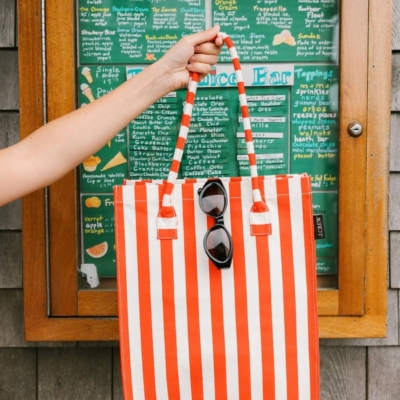This week Derval O’Rourke, Olympian and creator of healthy lifestyle platform Derval.ie, aims to demystify food labelling. Derval will help you understand the important information to look out for, and what is just marketing jargon …
We live in a busy world and often pick up products on the go for a snack, or to have as a main meal. As we have become more aware of our health and what we are eating, some food companies have become better at marketing their products for what we want to read. The taglines and logos on the front of packets can often be really distracting. It’s important to learn how to read food labels so that if you are grabbing snacks or pre-made meals, you know what to look out for. This will help you make better decisions and feel healthier.

My Top Tips For Learning The Language Of Labels:
Marketing vs Reality
Products can be described as ‘healthy’ or ‘natural’, but may not be what you would actually consider healthy if you take some time to understand what they contain. There is often an association with ‘free from’ products and health. However, unless you have a diagnosed intolerance or allergy there may be little benefit to choosing these. Remember if you remove something from a food product, it has to be replaced with something else for example extra sugar or additives. My advice would be to look beyond the branding and turn to the label on the back of the product
How do I read a food label?
Ingredients in food products are listed by weight, the ingredient that is listed first makes up a higher percentage of the product than the ingredient that is last on the list. This is important. I try to pick products that have whole foods in their first three ingredients. The longer the list of ingredients the more likely the product is highly processed. Sugar can be called many different names on a label including corn syrup, corn sugar, high fructose corn syrup, maltodextrin, sucrose, dextrose, honey, molasses or brown sugar. Fat can also go by many names for example butter, dripping, lard, milk fat, cream, vegetable oil, vegetable fat, peanut oil (or other nut oil), monoglycerides, trans fats and hydrogenated fat.
How do I understand serving size?
The nutritional information is always given per 100g but the amounts per serving size is the information to focus on. Take note of how much the serving size is as it might be far smaller than the amount you plan to consume. For example a serving size of a Twix chocolate bar is one finger and a 500ml bottle of Coke serves two!
What’s low and high when it comes to fat, sugar, salt and fibre –
Fat:
Low = less than 3g / 100g
High = more than 17g / 100g
Note: Avoid trans or partially hydrogenated fats which are industrially processed to increase shelf life.
Sugar:
Low = less than 5g / 100g
High = more than 22g / 100g
Note: No added sugar means no sugars have been added by the manufacturer but the product may contain natural sugars
Salt (sodium):
Low = less than 0.6g / 100g (0.1g /100g)
High = more than 1.5g /100g (0.6g / 100g)
Note: Guidelines recommend we aim for less than 6g per day
Fibre:
Low = less than 3g / 100g
High = more than 6g / 100g
Note: Guidelines recommend we get 24-35g per day of fibre, however 80% of Irish adults fall short of this target.
Overall, the best way to make healthier choices is to fill your trolley with foods that don’t need labels such as fruit, vegetables and meat from your butcher counter. For those products that do require labelling, take a minute to look at the package so that you can make an informed, smart and healthy decision.

Recipe of the Week
This week I wanted to share one of my favourite homemade sauce recipes – Spicy Peanut Satay Sauce
This recipe is great for:
– marinating meat or fish to create delicious skewers for the BBQ
– adding a spoonful to stir fries
– a handy dip for fresh veggies
Prep time: 5 minutes
Cook time: 15 minutes
Makes: 1L approx
Ingredients:
1tbs coconut oil
½ an onion, finely chopped
Thumb-sized piece of ginger, finely grated
4 cloves garlic, finely grated
1tsp dried chilli flakes
1 tbs medium curry powder
1 tin light coconut milk
500ml water
3tbs good quality peanut butter, smooth or crunchy
Method:
Heat the coconut oil in a large pan.
Add the onion and fry for 5 minutes, or until soft. Add the ginger, garlic, chilli flakes and curry powder and continue to cook fry for another 2 – 3 minutes. Add the coconut milk and water and bring to the boil.
Reduce the heat and simmer for a further 5 minutes, stirring well to combine the ingredients.
Stir in the peanut butter and serve!
Hungry for more recipes, fitness or healthy living advice? Visit Derval.ie and avail of a free 7-day trial and don’t forget to enter our competition to win one of five annual subscriptions …
LOVETHEGLOSS.IE?
Sign up to our MAILING LIST now for a roundup of the latest fashion, beauty, interiors and entertaining news from THE GLOSS MAGAZINE’s daily dispatches.










